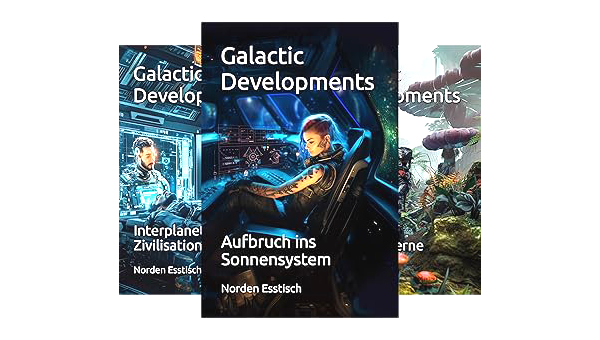
2155 Kommerzieller Asteroidenbergbau

Im Lauf eines Jahrhunderts wurde Asteroidenbergbau von einem wissenschaftlichen Forschungsgegenstand zu einer kommerziell rentablen Unternehmung. Frühe wissenschaftliche Missionen zu Asteroiden begannen Mitte des 21. Jahrhunderts in ernsthaftem Umfang, wobei für die lange Reise eine Mischung aus chemischen Raketen und elektrischem Antrieb eingesetzt wurde. Diese Missionen lieferten wertvolle Einblicke in die Zusammensetzung von Asteroiden und bestätigten den Reichtum an abbaubaren Ressourcen, der schon vorher durch Fernspektroskopie analysiert worden war.
In den Jahrzehnten vor 2155 führte die steigende Nachfrage nach Baumaterialien in der hohen Erdumlaufbahn sowie der wachsende Bedarf von Industrien und Bevölkerungen nach Autofab-Quellen und Metamaterialien zu einer Veränderung in der orbitalen Ökonomie. Der Transport von Material von der Erde im großen Stil war prohibitiv teuer geworden. Deshalb verlagerte sich der Rohstoffabbau zum Mond. Eine Entwicklung, die sich mit dem Bau der L1-Schattenblenden deutlich beschleunigte. Aber langfristig erwiesen sich auch die Ressourcen des Mondes, obwohl kostengünstiger als die der Erde, als energetisch zu teuer für große orbitale Infrastrukturprojekte.
Deshalb begannen Konsortien von global operierenden Unternehmen wie Star Industries / Äthiopien, Chandra SpaceWorks / Indien, Celestial Extraction Corp und Andean Sky Mining aus Südamerika, unter Beteiligung von North Star Resources und EuroSpace Materials, Planungen für die Rohstoffgewinnung jenseits des Mondes. Ihr Ziel war es, wichtige Ressourcen von Asteroiden zu extrahieren, darunter Baumaterialien wie Eisen, Aluminium und Titan, Wasserstoff, Sauerstoff und Stickstoff für Treibstoff und Verbrauch, außerdem Wasser, Lithium und Spurenelemente wie Phosphor, sowie seltene Erden einschließlich Gold und Platin.
Als Ergebnis von jahrzehntelangen Weiterentwicklungen in der Fusions-Technologie waren der Open-Injector-Fusionskern und leistungsstarke magnetische Spiegel kommerziell rentabel geworden. Diese Entwicklung ermöglichte es, den Fusionsfackel-Antrieb für die orbitale Verschiebung von Asteroiden einzusetzen. Mit dieser Technologie konnte Reaktorplasma, verstärkt durch Reaktionsmasse, direkt für den Antrieb benutzt werden. In Fällen, wo Reaktorbrennstoff und Reaktionsmasse reichlich vorhanden sind, bietet die Fusionsfackel damit eine kostengünstige und praktische Methode, Ressourcen aus dem mittleren Sonnensystem näher zur Erde zu bringen.
Im Jahr 2155 startet ein erstes kommerzielles Bergbauschiff mit einer Ladung von Komponenten für Fusionsfackel-Motoren. Das Ziel: ein ressourcenreicher Asteroid im inneren Asteroidengürtel. Der Plan besteht darin, die Motoren am Kern des Asteroiden zu installieren und ihn dann langsam in die Nähe der Erdumlaufbahn zu bringen. Im Gegensatz zu früheren Missionen, die hauptsächlich wissenschaftlich waren und kleine Asteroiden zur Forschung zurückbrachten, ist diese Mission rein kommerziell und in einer ganz anderen Größenordnung.
Das Konzept der Nutzung von Asteroidenressourcen ist nicht neu. Es hatte zahlreiche wissenschaftliche Missionen zu Asteroiden gegeben mit Landungen und Probenrückführungen. Allerdings waren diese Missionen in ihrem Umfang begrenzt; sie sammelten nur kleine Proben für wissenschaftliche Studien. Der Durchbruch kam mit der Entwicklung von Technologien, die es ermöglichen, ganze Asteroiden in den Erdorbit zu bringen.
Der Fusionsfackel-Motor spielt dabei eine entscheidende Rolle. Diese Motoren, die auf Kometenkernen installiert werden, bieten die nötige Leistung und Ausdauer, um die Flugbahn von Kometen signifikant zu verändern. Die Fusionsfackelmotoren werden mit dem in den Kometen reichlich vorhandenen Wasserstoff betrieben, einer praktisch unerschöpflichen Treibstoffquelle.
Trotz der großen Nachfrage nach Material birgt das kommerzielle Unterfangen wirtschaftlichen Risiken. Das Verschieben eines Asteroiden in die Erdumlaufbahn ist ein jahrzehntelanges Projekt. In dieser Zeit kann sich die wirtschaftliche, politische und technologische Landschaft dramatisch verändern, was die Rentabilität des Unternehmens negativ beeinträchtigen könnte.
Mit der zunehmenden Kommerzialisierung des erdnahen Weltraums, ist der Orbit nicht mehr nur die Domäne von Astronauten und Wissenschaftlern. Die Aussicht auf Reichtum durch den Asteroidenbergbau zieht viele verschiedene Menschen und Unternehmen an. Sie führt zu einem bedeutenden kulturellen Wandel: Der Weltraum wird von einem seltenen und exotischen Arbeitsumfeld zum neuen Geschäftsfeld für global operierende Unternehmen.
Mehr Raumfahrt
2135 Sonnenschirm für die Erde
2154 Gemini
2155 Asteroiden-Mining
2158 Space Patrol
2179 Private Asteroidenbasis
2182 Ende des Venus-Terraformings
2187 Strafgefangene auf dem Mond
2199 Anschlag auf das Dubai-Kosmodrom
2222 Weltraumpiraten
2234 Am Ende des Orbits
2247 Quantensprung
2268 Raumpiraten
2307 Fraktale Antriebe
2333 Metrische Impulsverstärkung
2347 Interstellares Slowboat
2394 Sternenschwarm
2422 Jupiter-Saturn Schnellbahn
2430 Proxima Centauri
2458 Durchbruch
2466 Überlichtantrieb
2484 Flucht zu den Sternen
2497 Forschungsschiff zu den Aliens
2501 Extraplanetare Forschung
2523 Erste interstellare Siedler
2648 Abenteuerliche Reise
2747 Raumrennen
Neue Beiträge
2158 Space Patrol
2222 Weltraumpiraten
2326 Kein interplanetarer Krieg
3050 Königliche Garde
3090 Solo Ehre
2234 Am Ende des Orbits
2248 Gemini-Katastrophe
2366 Orbitale Ökonomie
2312 Kaio-Artefakt
3361 Erste Menschheit
2333 Metrische Impulsverstärkung
2337 Verschwörung im Orbit
2247 Quantensprung
2284 Trennung der Erde
2321 Isolation der Erde
2205 Unternehmensnationen
2192 Antiexpansionistischer Terror
2179 Private Asteroidenbasis
2231 Vereinte Planeten
2291 Verbotene Forschung
Die Besten
(20 von 75)
2091 Baum des Lebens
2135 Sonnenschirm für die Erde
2179 Private Asteroidenbasis
2205 Unternehmensnationen
2222 Weltraumpiraten
2248 Gemini-Katastrophe
2303 Raumhändler-Putsch
2333 Metrische Impulsverstärkung
2412 Pontos Mission
2445 Scum-Festival
2544 Nachricht des Jahrhunderts
2630 Verschwörung gegen die Menschheit
2648 Abenteuerliche Reise
2786 Nette Aliens
2841 Leuchtender Tempel
2915 Belagerungskanone
3010 Wiederbesiedlung Kisors
3050 Königliche Garde
3191 Umzug nach Cobol
3340 Strategische Initiative
 2154
Gemini
2154
Gemini

 2158
Space Patrol
2158
Space Patrol